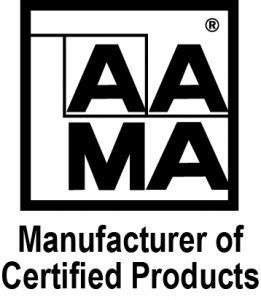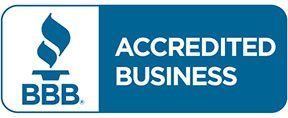What To Know Before Buying Windows
Windows Buying Guide
You should never compare windows by price alone. Just because a window costs more does not necessarily mean it will perform better. This guide is designed for a home owner in Central Ohio with little or no window experience. It is intended to teach you how to perform an “apples to apples” comparison of different windows without relying on well rehearsed in home demonstrations where the outcome is never in question.
-
Rating Organizations
Rather than relying on these demonstrations to determine the quality of the window you are considering we encourage you to take the time to find out true performance ratings.
Luckily there are two non-profit industry organizations that perform scientific tests on windows and make the results available for free.
These organizations are:
- National Fenestration Rating Council (NFRC) www.nfrc.org
- The NFRC provides the U-factor and SHGC ratings
American Architectural ManufacturersAssociation (AAMA). ww.aamanet.org AAMA provides product certification, Air Leakage (AL) and Design Pressure (DP) A Gold Label certification from AAMA means not only was a window tested but every window that is manufactured must meet the same standards not just the window that was sent in for testing.
These databases are set up for professionals and can be difficult to navigate. However your sales representative should be able to provide you with all the ratings for the windows they are presenting any company unwilling to provide this information should raise a red flag.
-
Air Infiltration
In our opinion this is the very most important measurement to consider. When choosing a window you should choose a window with an air infiltration rating of 0.07 or lower.
Having a window that can withstand sustained winds of 195mph is great but if the curtains start to be blown about at winds of 25 mph that is a problem.
While no window manufacturer likes to admit it, all windows leak some air. Again AAMA provides this information for all windows that have been tested. The AL for a double hung window typically falls between 1.0 and 0.02. The lower the AL (Air Leakage) the better a window is at keeping cold air from entering your home.
-
The Glass
The glass of a window makes up a majority of the surface area of a window and results of these tests are also very important.
While demonstrations may be fun, as mentioned above NFRC provides the results of tests conducted in laboratories with controlled settings that are much more precise than can be achieved in your home.
The most often talked about number in glass performance is the U-factor. U-factor is a measure of how well a window prevents heat from escaping your home, and the lower the U-Factor the better the window is at preventing heat from escaping. While U factors generally range from a high of 1.2 to a low of 0.17, it is important to make sure you purchase a window with a U-factor of 0.30 or less, as 0.30 is the highest U-factor that will achieve an Energy Star rating and may also be eligible for a federal energy tax credit.
The next measure of heat transference is the Solar Heat Gain Coefficient (SHGC).
SHGC is a measurement of how well a window keeps heat from the sun from entering your home (radiation heat). SHGC is measured as a value between 1 and 0, and the lower the SHGC the better a window is at keeping heat from the sun out of your home. SHGC is generally not as important for northern climates. In Ohio .30 or lower is recommended and lower SHGC may be considered for areas of your home where the heat from the sun can be a problem.
-
DP Rating
While all residential windows are required to meet minimum standards for certification, a stronger window can be indicative of a better constructed window which will stand the test of time better.
Windows strength is measured by the amount of wind and rain it can successfully resist, with a number known as Design Pressure (DP).
A DP rating of 40 or greater is recommended.
A window with a DP40 rating will withstand sustained winds of 153 mph and 8” of rain per hour with 48 mph winds.
-
The Company
Even the best window will perform poorly when improperly installed. That is why it is important to choose a company that will install your windows properly and be there in the event there is a problem in the future.
Make sure the company you are dealing with has physical location not just a website and a cell phone.
There are some easy ways to get an idea of how a company performs.
One way is to ask for jobs they have done in your area. Another way to check in on a company is go to your local Better Business Bureau (BBB) and check their rating and standing. See if there are any unresolved complaints.
You can do this at the central Ohio BBB website located at: http://centralohio.bbb.org/ or you can call the central Ohio BBB at (800) 759-2400.
-
Conclusion
In conclusion: Select a window with an AAMA gold label certification that meets Energy Star requirements. You must also confirm the air infiltration rating as well as U factors and the SHGC (Solar Heat Gain Coefficient).
You should have this window installed by a company you can trust, that has been around for a while with a physical location, and most importantly stands behind the window they are selling. Your sales professional should be able to provide you with all of this information about their window “if” it has been certified and tested.
If you have questions about windows please feel free to e-mail us at info@empirewindows.com or call us at 614-766-1400
Replace Those Old Drafty Windows Now!
Schedule Your Free
In-Home Estimate
CONTACT INFORMATION
For the safety of our staff and customers visits are by appointment only.
Empire Windows - Delaware
6241 US-Highway 23 N, Delaware, OH 43015
Empire Windows - Columbus
41 S. Grant Ave, Columbus, OH 43215
Quality Replacement Windows in Columbus At a Price You Can Afford From a Company You Can Trust
Awards And Associations

Slide title
Write your caption hereButton
Slide title
Write your caption hereButton-

Slide title
Write your caption hereButton 
Slide title
Write your caption hereButton
Slide title
Write your caption hereButton
Slide title
Write your caption hereButton-

Slide title
Write your caption hereButton









